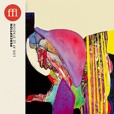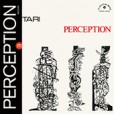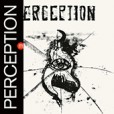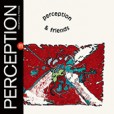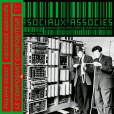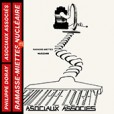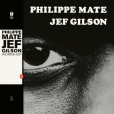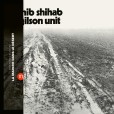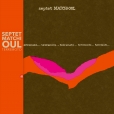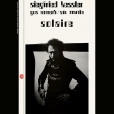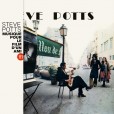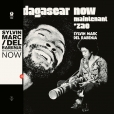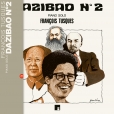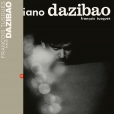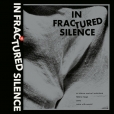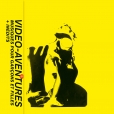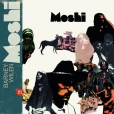Your basket is empty

A precious, previously unreleased live recording from 1977, when Jacques ‘Jeter La Girafe A La Mer’ Thollot was drummer.
‘By the time Mestari, their third and final album, came out, Perception had four years of questing and originality behind them, developing their own individual language, in which the improvisatory spontaneity did not exclude influences from European folk or classical traditions.
‘Balanced, ethereal and structured, Mestari reinstated the original quartet. It opens infinite perspectives, totally in phase with what was being produced in France at the same time by the Cohelmec Ensemble and the Dharma Quintet.’
The first of a fascinating trio of LPs — this for Futura in 1970, by Hungarian saxophonist Yochk’O Seffer, German pianist Siegfried Kessler, French bassist Didier Levallet and Vietnamese drummer Jean-My Truong.
‘Lyrically incandescent free jazz, made up of startling interactions between complex harmonies and disjointed rhythms.’
‘The second LP, from 1971, augmenting the original quartet with numerous guests including Teddy Lasry, Jean-Charles Capon, Kent Carter and Jean-François Jenny-Clark. Siegfried Kessler is largely absent on this recording, temporarily replaced by Manuel Villaroel, a pianist from Chile with a completely different temperament.
‘It all seems to predict the after-life of Perception would subsequently take. One track, by Yochk’O Seffer, who had already been part of Magma two years previously, looks forward to the more structured Neffesh Music, whilst, in the opposite direction, another track, by Didier Levallet, is more evocative of the future arrangements on Swing Strings System. All these different elements, from tightly written pieces to wild improvisation, work so well together: their coherence is one the key attributes of a group free like few others.’
From 1976, the first of the two albums by the Asocial Associates, led by Philippe Doray of Rotomagus.
‘Psychedelic pop, voodoo rock, wrong krautrock, woozy swing… bringing to mind as much Hendrix as Areski, Ash Ra Tempel as Berrocal. No wonder that Nurse With Wound lists Philippe Doray between the Doo-Dooettes and Jean Dubuffet. One of the best albums of experimental song ever recorded.’
Saxophonist Phillipe Maté has played with the Acting Trio, Jef Gilson and Butch Morris, amongst others; and that’s him on Jean-Claude Vannier’s brilliant L’Enfant Assassin Des Mouches. As the recording engineer of BYG, Daniel Vallancien worked alongside Anthony Braxton, Don Cherry and Sonny Sharrock; for Saravah he recorded Brigitte Fontaine and the Cohelmec Ensemble. From 1972, this free-form saxophone/electronics collaboration is another bonafide classic of the French musical underground, revived with characteristic panache by Souffle Continu.
The 1994 return of pioneering electronic guru Richard ‘Heldon’ Pinhas to the forefront of the French underground scene. The fruits of a two-year collaboration with John Livengood from Red Noise and Spacecraft, inspired by Norman Spinrad’s novel Rock Machine. First vinyl issue.
Manuel Villarroel left Santiago in September 1970 to participate in the Contemporary Music Workshop in Berlin. He rapidly decided to remain in Europe, to pursue his musical career. The following year, the pianist formed a quartet in Paris with saxophonist Jef Sicard (from the Dharma Quintet to be), adding Gérard Coppéré (saxophone), William Treve (trombone), François Méchali (bass), and Jean-Louis Méchali (drums). With the arrival of Sonny Grey, a Jamaican trumpeter who had collaborated ten years earlier with Daniel Humair, they were ready.
On May 8, 1971, the Septet Matchi-Oul was in the studio for Gérard Terronès’ Futura label. recording seven of Villarroel’s compositions.
Siggy was the piano accompanist of Archie Sheep over several decades; he recorded with Dizzy Reece and Hal Singer.
Here is his key LP as leader, in 1971 — with bassist Gus Nemeth and percussionist Stu Martin — edging from post-Trane into free jazz, with an ear for the contemporary electroacoustic music of Xenakis, Berio and co.
This saxophonist came through with the likes of Roy Ayers and Joe Henderson in the sixties, before hooking up with Steve Lacy in Paris in 1973. In this soundtrack composed for a film by his friend Joaquin Lledó — entitled Le Sujet Ou Le Secrétaire Aux Mille Et Un Tiroirs — he was joined by members of the group around Lacy, and diverse co-conspirators including friends from the funk outfit Ice, French accordionist Joss Bassellion, and none other than Jef Gilson at the mixing desk. It’s a dazzling, intensely entertaining blend of modal, cosmic and spiritual jazz, free funk, dirty grooves, heavy jams, bistro boogie and Javanese wah-wah.
These two sharpened their musical skills in the celebrated seja-jazz band from La Réunion, Le Club Rythmique. In 1967 Sylvin Marc put out a terrific funk 45, saturated in James Brown. Later, he would play bass for Nina Simone on her album Fodder On My Wings, whilst Del Rabenja would work with Manu Dibango.
In these 1972 recordings for Jef Gilson’s Palme label, they are joined by their Madagascan compatriots Ange Japhet, Gérard Rakotoarivony and Frank Raholison — comprising the same group of five which lights up Funny Funky Rib Crib by Byard Lancaster and Soul Of Africa by Hal Singer & Jef Gilson.
The first side showcases the valiha harp-playing of Del Rabenja: three excursions in tribute to the great Rakotozafy, hypnotic and full of spirituality. The second side presents four compositions by Marc — free, grooving and cosmic.
A second set of piano improvisations, one year after the first, now more extended, percussive, insistent, and tumultuous; explicitly enraged by the recent murder of George Jackson by a San Quentin guard, and the massacre at Attica Prison.
Reaching solo-piano explorations in blues, jazz and classical music by the Free Jazz pioneer, in 1970; inspired by the revolutionary spirit of the times, and — opening with a dedication to Don Cherry — the New Thing.
Inspired, free, luminous music-making. An outernational holy grail and a stiff tonic for all citizens of nowhere.
Already the great French jazz saxophonist had made monumental records alongside all-time legends like Monk, Blakey, Bud Powell and Miles — that’s Wilen on Lift To The Scaffold — before cutting loose at the end of the sixties on a two-year journey through Morocco, Algeria, Niger, Mali, Upper Volta (now Burkina Faso) and Senegal, with a team of film-makers, technicians and musicians.
Moshi means trance utterance — the moshi is a demon invoked by the Fulani Borogi of Niger, to chase away angst and depression — and this is a shamanistic bricolage of smoky musical spells and scraps of intimate, outdoors ambience, full of love, good vibes and gritty musical wonder, drawn from more than fifty tape reels recorded en route: desert blues, space-jazz, street-funk, acid rock, polyphonic rhythms and new-thing influences like Shepp and Sanders; buzzing, extended ensemble sessions, like alternative Bitches Brews, crossed with diverse snippets of magic grabbed on the wing, like Algerian gnawa, or solo mbira, or just people laughing together, or a Bamako griot…
Beautifully presented, with a twenty-page booklet, and the DVD of Caroline de Bendern’s vivid, freewheeling film A L’Intention De Mlle Issoufou A Bilma, about the trip.
Fervently recommended.
With the arrival of clarinettist-saxophonist Louis Sclavis in 1973 (and the departure of trumpeter Jean Mereu in 1975), the Workshop De Lyon was born of the Free Jazz Workshop.
A warmly accessible, beautifully performed, joyous mixture of wailing improv and propulsive, rootical preparations, this second album derives its upful, digressive theatricality from the Arts Ensemble Of Chicago, and its urgent sublimification of vernacular rhythms and melodies from Albert Ayler. Wild and free, but grounded in stuff like Bechet, Monk and George Russell.
Terrific.
